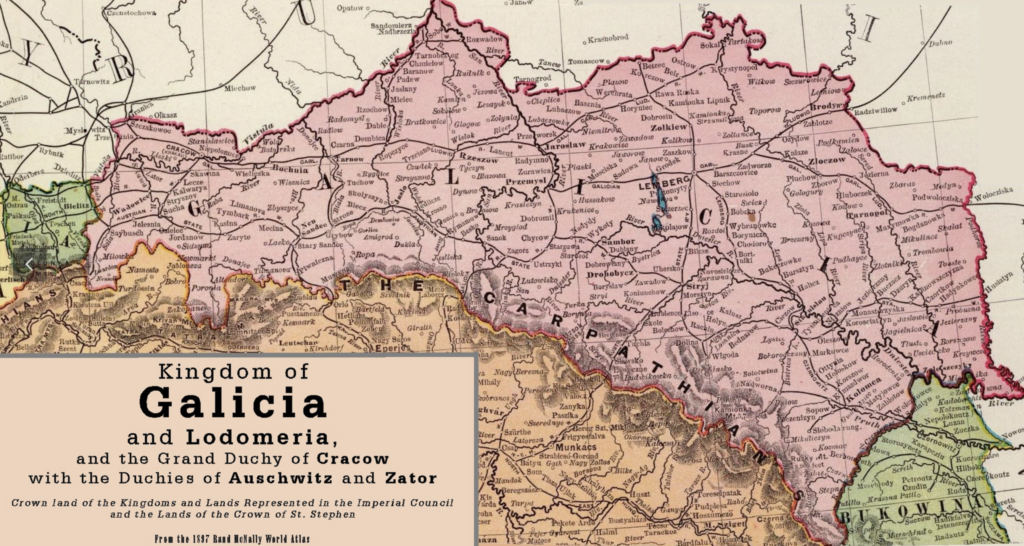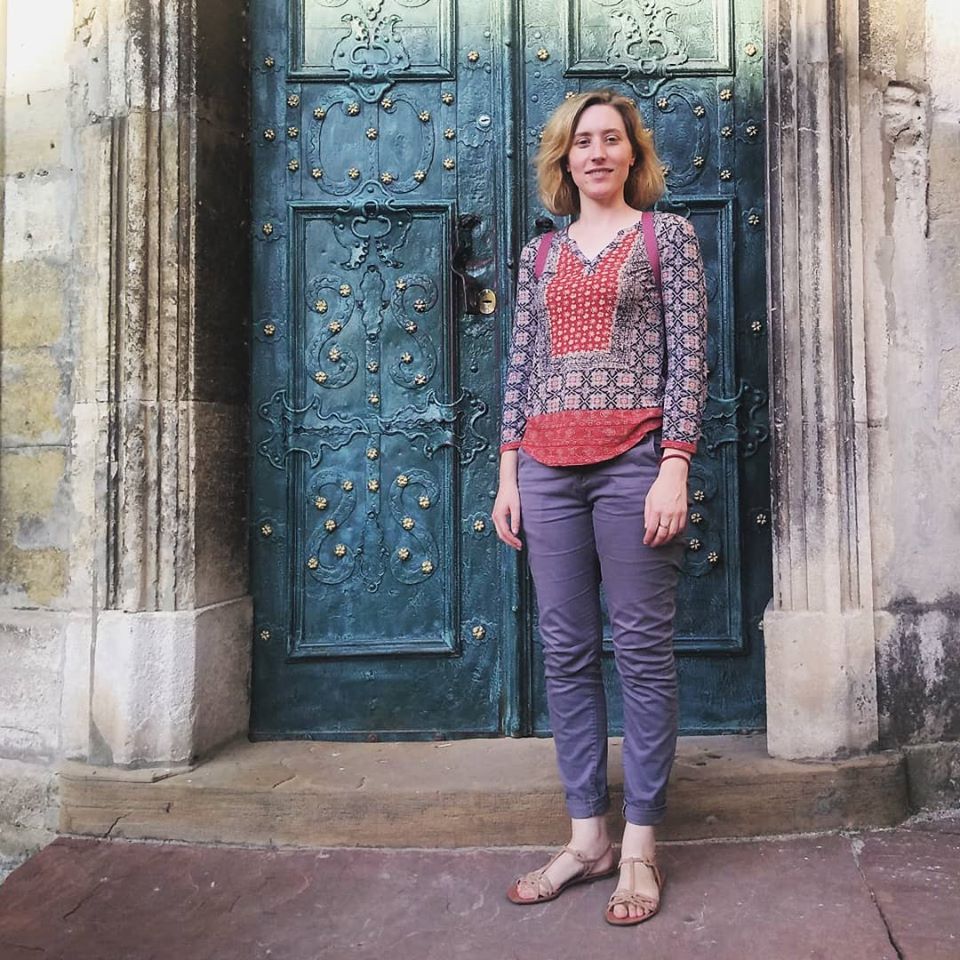
Galicia is a historical and geographical region in central-eastern Europe, today divided between western Ukraine and eastern Poland. The Kingdom of Galicia and Lodomeria was created following the Partitions of Poland starting in 1772 and was under the rule of the Habsburgs. It was an economic resource, a cultural hub and a strategic military region, among its many roles. These contributions helped shape the dynamics and policies of the Habsburg Empire during its existence. Galicia disappeared with the fall of the Austro-Hungarian Empire, yet, even though it was swiped from the maps, its spirit subsists.

We had a talk with Areta Kovalska, who runs Forgotten Galicia, a blog on which she collects, documents, shares and helps preserve remnants of the past in Galicia before it is forgotten forever. Granddaughter of World War II refugees from Ukraine, she was born and raised in the United States. She was deeply involved in the Ukrainian community, and her immersion in the Galician dialect and culture greatly influenced her upbringing. She relocated to Lviv thirteen years ago, and uses her blog to popularise the architecture and history of the region and bring its rich heritage to a wider audience. Her goal is to unite people of different ethnic backgrounds who share an ancestral connection to Galicia while keeping the region's memory alive.
I approach the history of Galicia primarily through its historical built environment. I strive to understand the broader architectural styles employed and the reasons behind them. I explore the functions of various buildings and how they reflected the society of the time, considering the diverse ethnic and religious groups that lived there and the types of organisations and institutions that existed. Additionally, I pay close attention to small architectural and infrastructural details, which offer insights into the everyday lives of people during that era.
Accordingly, my investigation into Galicia is driven by curiosity and a keen eye for detail. As I walk through the streets of Lviv and other towns and villages in the region, I’m constantly on the lookout for old buildings and historical artefacts. After spotting something interesting, I research its history and significance, using books, articles, and online sources, as well as engaging with local historians and other knowledgeable individuals passionate about this history.
The times of Austro-Hungarian rule is often remembered as a time of relative stability, cultural flourishing, and economic development for the region of Galicia. This contrasts with the more turbulent and oppressive periods that followed, such as the Soviet era.
For Ukrainians, this historical period represents a time of close integration with Europe. Given the current full-scale invasion by Russia, the country’s aspirations for European integration and alignment with European values have become critical. Reflecting on Galicia’s historical ties to Europe serves as a poignant reminder of Ukraine’s longstanding connection to the West.
The era when Galicia was under Habsburg rule offers lessons on multiculturalism, tolerance and integration, economic development, cultural revival, and governance. The Habsburgs managed a diverse empire with various ethnic, linguistic, and religious groups. Their approach to multicultural governance, which included granting certain autonomies and supporting cultural institutions, can inform modern policies on managing diversity and promoting inclusivity.
Galicia’s legacy in both Poland and Ukraine spans various spheres, including architectural, national, and cultural dimensions.
The architectural heritage of the Austro-Hungarian period is prominently visible in towns and cities across the region, particularly in Lviv and Kraków. Although these cities are now in separate countries, they share a historical built environment. Both experienced construction booms from the mid-19th century to World War I, adopting Vienna-influenced Historicism and Secession styles. This shared architectural style highlights the region’s unified past and the significant influence of the Habsburg Empire on its urban development.
Under Habsburg rule, Galicia played a pivotal role in shaping both Ukrainian and Polish national identities. Supportive policies, educational institutions, political representation, and economic opportunities facilitated cultural revival, intellectual development, and political activism. These factors distinguished Galicia from other regions under different imperial or national influences, making it a focal point for national identity formation and expression. Ultimately, this helped shape what today became the modern nations of Ukraine and Poland.
Galicia’s influence also persists in local dialects, with both the Polish and Ukrainian languages in the region having distinct Galician features. My favourite linguistic legacy of the Austro-Hungarian era is the greeting “servus”. Derived from Latin, this salutation gained popularity during the empire’s rule and was widely used across its territories. While “servus” has faded in some areas, it can still occasionally be heard on both sides of the modern border dividing Galicia, spoken by both Poles and, to a lesser extent, Galician Ukrainians. I am always delighted when someone says it to me, as it feels like I am being greeted from the olden days, from the times of the Kingdom of Galicia and Lodomeria.
Finally, Galicia’s influence can be found in its culinary traditions. Dishes like schnitzels, strudels, Pischinger wafer cakes, and Sachertortes are still served in cafes across the region, reflecting the lasting impact of Austro-Hungarian cuisine.

If you want to learn more about Galicia, check out Areta's blog Forgotten Galicia by following this link : https://forgottengalicia.com/